Modeling memory dynamics in visual expertise
- PMID: 30346211
- PMCID: PMC6476689
- DOI: 10.1037/xlm0000664
Modeling memory dynamics in visual expertise
Abstract
The development of visual expertise is accompanied by enhanced visual object recognition memory within an expert domain. We aimed to understand the relationship between expertise and memory by modeling cognitive mechanisms. Participants with a measured range of birding expertise were recruited and tested on memory for birds (expert domain) and cars (novice domain). Participants performed an old-new continuous recognition memory task whereby on each trial an image of a bird or car was presented that was either new or had been presented earlier with lag j. The Linear Ballistic Accumulator model (LBA; Brown & Heathcote, 2008) was first used to decompose accuracy and response time (RT) into drift rate, response threshold, and nondecision time, with the measured level of visual expertise as a potential covariate on each model parameter. An Expertise × Category interaction was observed on drift rates such that expertise was positively correlated with memory performance recognizing bird images but not car images as old versus new. To then model the underlying processes responsible for variation in drift rate with expertise, we used a model of drift rates building on the Exemplar-Based Random Walk model (Nosofsky, Cox, Cao, & Shiffrin, 2014; Nosofsky & Palmeri, 1997), which revealed that expertise was associated with increases in memory strength and increases in the distinctiveness of stored exemplars. Taken together, we provide insight using formal cognitive modeling into how improvements in recognition memory with expertise are driven by enhancements in the representations of objects in an expert domain. (PsycINFO Database Record (c) 2019 APA, all rights reserved).
Figures


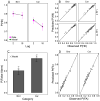
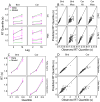
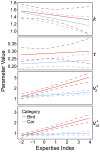


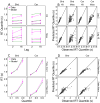
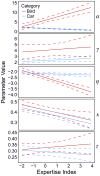
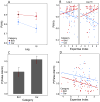

References
-
- Baker J, Côté J, Abernehty B. Sport-specific practice and the development of expert decision-making in team ball sports. Journal of Applied Sport Psychology. 2003;15:12–25. doi: 10.1080/10413200390180035. - DOI

